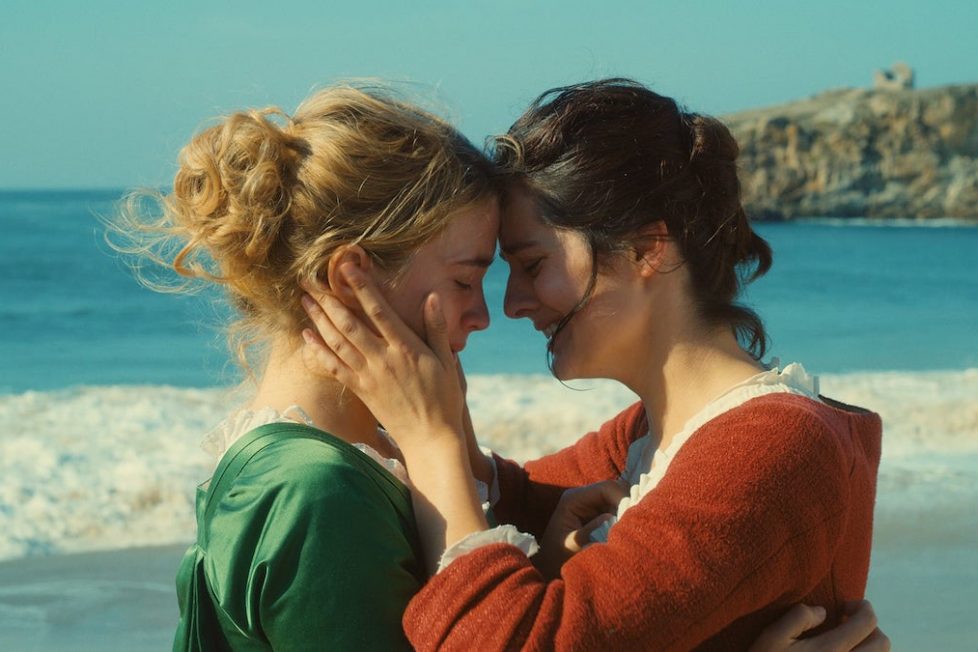PORTRAIT OF A LADY ON FIRE (2019)
On an isolated island in Brittany at the end of the 18th-century, a female painter is obliged to paint a wedding portrait of a young woman.

On an isolated island in Brittany at the end of the 18th-century, a female painter is obliged to paint a wedding portrait of a young woman.


After premiering at 2019’s Cannes Film Festival, Celine Sciamma’s fourth feature film won her the ‘Queer Palm’ and ‘Best Screenplay’ awards. It was also nominated for the Palm d’Or, losing out to Bong Joon-ho’s Parasite (2019). It’s genuinely surprising then that one of the best romantic dramas in recent years didn’t get more recognition in awards season.
But don’t let this unjust awards snub fool you. Portrait of a Lady on Fire/Portrait de la jeune fille en feu is a sensational film and undoubtedly one of the best of last year, if not the previous decade. Each and every frame is a work of art; a masterpiece which wouldn’t look out of place on a museum wall. But the gorgeous cinematography is just one of many other aspects which are nothing short of perfect.
In late-18th-century Brittany, Marianne (Noémie Merlant)—a young, worldly yet reserved painter—is commissioned to complete a portrait of Héloïse (Adèle Haenel) by the latter’s mother. Héloïse is due to be reluctantly married off to a Milanese nobleman, the same man her sister had been due to marry before she committed suicide. Héloïse doesn’t want to marry so soon after finding her freedom from a Benedictine convent and refuses to pose for a painter, so Marianne is tasked with being her ‘walking companion’, where she must observe and gaze at Héloïse before completing the portrait.
The pair take long walks on the beaches of Brittany, where Marianne takes mental photographs of her subject’s features, jotting down sketches of body parts which, in time, she’ll come to kiss and be caressed by. The idea is that she must complete Héloïse’s portrait from memory, which is just one of the many layers this film possesses in conveying the female gaze as well as the idea of preserving love in memory.
It’s easy to see why this picture won Sciamma ‘Best Screenplay’ at Cannes. Where there’s silence, there are wistful gazes in equal exchange—or, in the latter parts of the films, tiny intimate touches of their bodies, their first kisses hesitant and restrained. And where there’s dialogue, not a single syllable is wasted. “In solitude, I felt the liberty you spoke of. But I also felt your absence,” is just one of the many short lines of dialogue which carry a huge underlying emotional weight to them.
A key part of the script is where Héloïse, Marianne, and the housekeeper Sophie (Luàna Bajrami) discuss the meaning of the legend of Orpheus and Eurydice. In short, Orpheus is allowed to bring his love Eurydice back from the underworld so long as he doesn’t look back at her, or else she’ll vanish. The story goes that he turns back to check on her and, after one final fleeting glance, she’s gone. The housekeeper exclaims that Orpheus was stupid: why would he do that knowing he’d lose Eurydice for good? But Héloïse argues that he was choosing to keep the memory of her forever, for he had already seen her die once and the memory of her would be better than losing her a second time.
The discussion of this Ancient Greek myth forms the basis on which many of the film’s thematic layers are built on. Marianne, throughout her romance with Héloïse, is haunted by an image of her wearing a wedding dress, something which comes to hold great significance during their final moment together.
At one point, Héloïse asks Marianne how she knows when a portrait is finished. “When we stop,” she tells her. Nothing lasts forever, but our experiences and feelings can be immortalised in art. And so Portrait of a Lady on Fire is—like what every good romantic drama should be—much more than a film about blossoming love and romance, for it’s just as much about memory, self-discovery and freedom—themes Sciamma is no stranger to in her previous films Girlhood (2014) and Water Lillies (2007).
Music is used sparingly (there are only three occasions throughout the film) but to great and devastating effect. In the first, Marianne plays Vivaldi’s “Four Seasons” to Héloïse on a harpsichord, just as they’re beginning to realise their feelings for each other. Marianne tells Héloïse that it is about a brewing storm, and Héloïse reveals that she has never heard any other music other than what was available to her at the convent.
The second sees a harmonic choral upsweep of female voices gathered around a bonfire as Marianne and Héloïse stare at each other across it, building up and up until Héloïse’s dress catches fire. The third and final use of music, however, is the truly devastating one: as Héloïse watches an orchestra play Vivaldi’s “Four Seasons”, the camera slowly zooms in on her face, which is overcome by emotion as she recalls the first time Marianne played it for her.
The final few scenes of this film are genuinely breathtaking. For the most part, the pace is as slow-burning as the candles and fireplaces which light Héloïse’s home, but as we reach the end there’s an explosion of music and emotion to create one of the most memorable endings to a film ever. It’s an ending that sticks with you and simmers away in the back of your mind for days after.
As said before, everything aspect of this film is nothing short of perfection. It’s a visual feast inhabited by stunning performances, sewn together by a writer-director at the top of her game to bring us a deeply layered and emotional story.
writer & director: Céline Sciamma.
starring: Noémie Merlant, Adèle Haenel, Luàna Bajrami & Valeria Golino.
